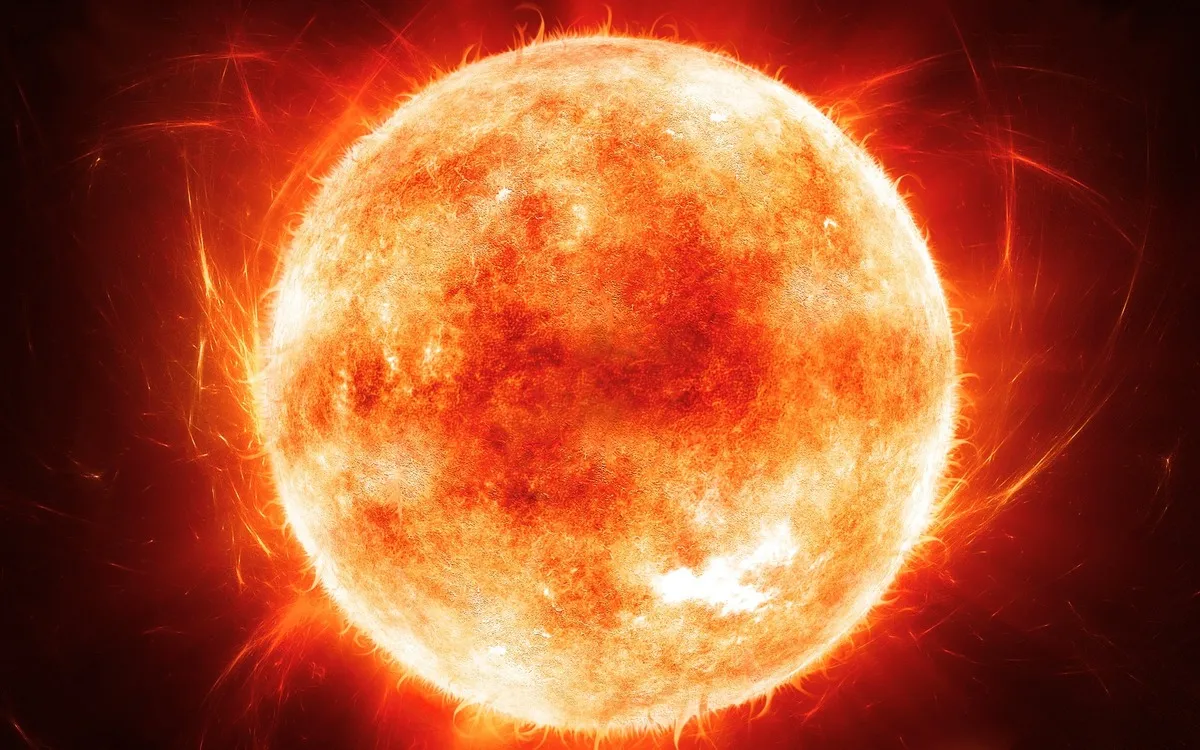Violent Outbursts by Baby Sun May Have Triggered Life on Earth

Once upon a time, we thought that these outbursts would have posed a hindrance to life on Earth. But evidence suggests they may have been the trigger that kicked it all off, as solar particles collided with molecules in Earth's early atmosphere to create the basic building blocks that would later combine to create life, the journal Life reported.
Now by bombarding a replica of the primordial atmosphere with simulated solar particles and lightning in the laboratory, researchers have created amino acids and carboxylic acids – two of the essential basic ingredients for proteins and life.
"We have, for the first time, experimentally shown that the production rates of amino acids and carboxylic acids in non-reducing gas mixtures … due to proton irradiation can significantly exceed the production rates of these molecules via galactic cosmic rays and spark discharges," write a team led by chemist Kensei Kobayashi of Yokohama National University in Japan.
"This provides experimental evidence supporting the importance of solar energetic particle events in the young Sun as energy sources which were required for the synthesis of the biologically important molecules deposited and accumulated in diverse aquatic geological settings of the early Earth."
Earth is the only place in the Universe on which we know for a certainty that life exists. Yet we don't know why some 4 billion years ago complex chemistry began to self-replicate like it did. We have a very rough idea of the basics, but the specifics are proving a little tricky to piece together.
For a long time, scientists thought that lightning might play a role, interacting with molecules, heat, and water to form amino acids, the basic molecules on which life is built.
Experiments seemed to suggest this was accurate. When gasses thought to constitute Earth's early atmosphere were combined and zapped with sparks in 1953, amino acids formed. Back then, we thought Earth's early atmosphere was infused with large amounts of methane, ammonia, water vapor, and molecular hydrogen. Given those assumptions, experiments tended to focus on gas mixtures consisting of these substances.
Later research, however, showed that Earth's atmosphere wasn't so rich in methane and ammonia after all. Rather, it was dominated by gasses produced by volcanic activity – carbon dioxide and molecular nitrogen, with just a small amount of methane. Similar spark experiments performed on this mixture resulted in a very inefficient amino acid production.
It was then suggested galactic cosmic rays might have been involved. Experiments mimicking this process irradiated a simulated early atmosphere with protons, resulting in more suitable production of amino acids. But whether the irradiation of galactic cosmic rays was sufficient during Earth's early development to provide the kind of chemistry necessary for life remained debatable.
A breakthrough came several years ago in 2016 when a team led by solar scientists Vladimir Airapetian of NASA's Goddard Space Flight Center decided to take a closer look at the Sun. This seems a little counter-intuitive; the Sun's early behavior, at first glance, doesn't seem conducive to life-yielding conditions. Not only was it very cranky, it was cooler and dimmer, at only 70 percent of its current output.
Airapetian and his team showed that the Sun's crankiness could have compensated for its coldness, lashing Earth with superflares that could have warmed Earth despite the coolness of the Sun, and triggered chemical reactions that produced prebiotic molecules. Kobayashi, who has spent decades investigating prebiotic chemistry, reached out to Airapetian to investigate.
The team made a number of gas mixtures simulating hypothetical atmospheres of early Earth, containing molecular nitrogen, carbon dioxide, water vapor, and methane in various proportions. These mixtures were placed in a chamber, where they were subjected to either proton irradiation, to mimic the effect of solar flares, or electrical discharges, to simulate lightning.
The effects were fascinating. The researchers found that the mixture needed to constitute at least 15 percent methane for the sparks to produce amino acids, which is not a small amount at all. However, the simulated solar particles produced amino acids and carboxylic acid with a mixture that was just 0.5 percent methane.
It's far from a smoking gun, but it does suggest that rampant solar activity could have played a significant role in life's origins. And although lightning could have played some role, it was likely a much lesser contributor.
"And even at 15 percent methane, the production rate of the amino acids by lightning is a million times less than by protons," Airapetian says.
"During cold conditions you never have lightning, and early Earth was under a pretty faint sun. That's not saying that it couldn't have come from lightning, but lightning seems less likely now, and solar particles seem more likely."
This could be an important clue as to how and why we got here, but it could also help astronomers identify where prebiotic chemistry may have formed elsewhere, as well. For example, NASA's Curiosity rover found abundant nitrates on the surface of Mars, which suggests that nitrogen fixation (combining molecular nitrogen with other elements to form compounds) was relatively efficient once upon a time on Mars. Perhaps the tempestuous Sun had a hand there, too.
4155/v





















